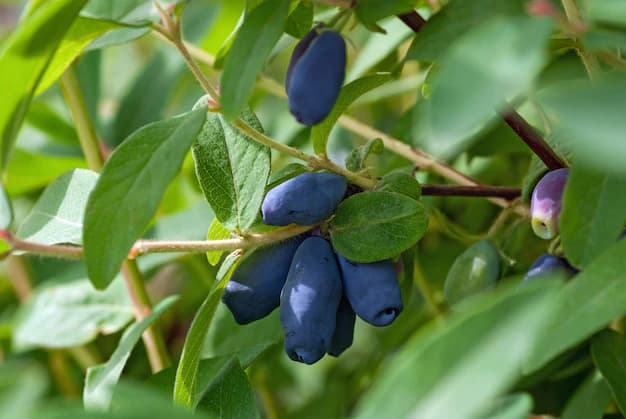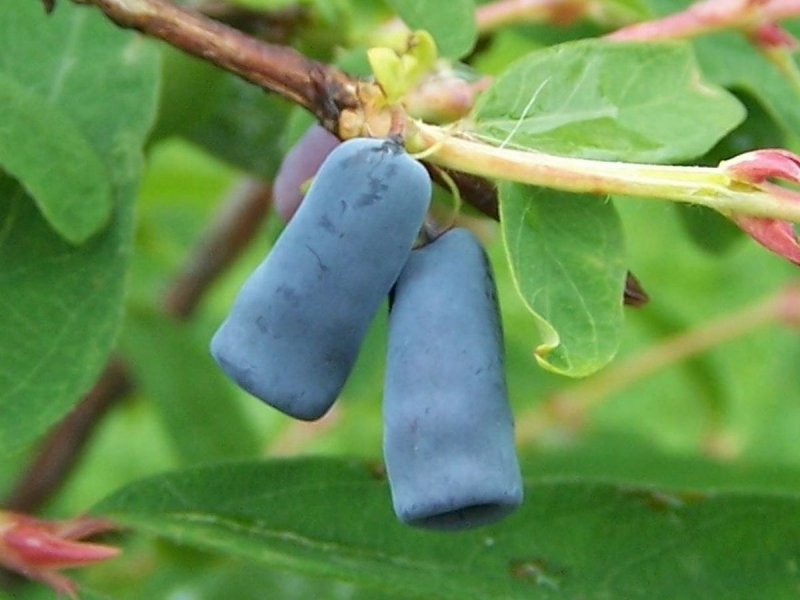Blue Honeysuckle
Lonicera caerulea, also known by its common names Blue Honeysuckle, sweet berry honeysuckle, fly honeysuckle (blue fly honeysuckle), blue-berried honeysuckle, or the honeyberry, is non-climbing honeysuckle native throughout the cool temperate Northern Hemisphere regions of North America, Europe, and Asia. The plant or its fruit has also come to be called haskap, derived from its name in the language of the native Ainu people of Hokkaido, Japan.
Haskap is a deciduous shrub growing to 1.5–2 m tall. The opposite, oval, greyish green, leaves are 3-8 cm long, 1-3 cm wide, and have a slightly waxy texture. The blooms are produced in pairs on the stalks and are yellowish-white, 12–16 mm long, and have five equal lobes. The fruit is a blueberry that can be eaten. It is slightly rectangular in shape, weighs 1.3 to 2.2 grams, and has a diameter of around 1 cm. Haskap cultivars can tolerate a wide range of soil acidity, from 3.9 to 7.7, but for maximum productivity, they need high levels of organic matter, well-drained soils, and lots of sunlight. Compared to most fruit species, Lonicera caerulea plants are more tolerant of moist environments. Over centuries in East Asian countries, Lonicera caerulea has been used for supposed therapeutic applications in traditional medicine.








